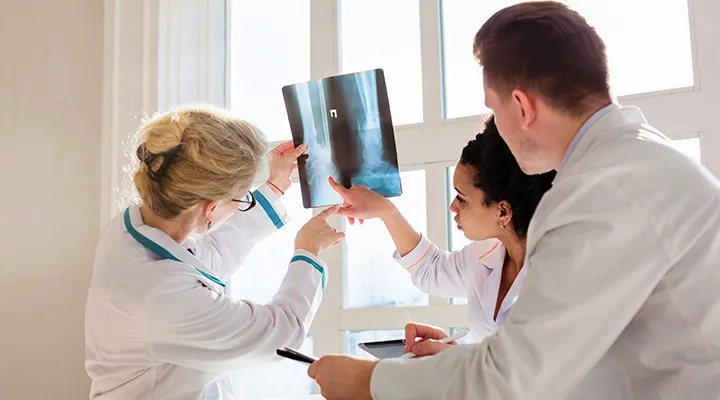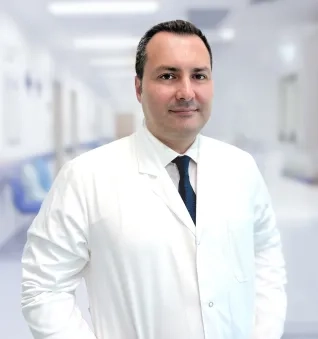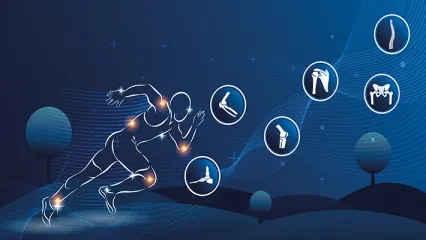Alo Yeditepe
Alo Yeditepe
What is a Bone Tumor? Bone Tumor Symptoms
Bone pain that increases in intensity at night and does not respond to painkillers may be a harbinger of a bone tumor if it persists for a long time”. Emphasizing that pain is a common complaint that can be seen in many orthopedic problems, but arm and leg pain may not always follow musculoskeletal trauma, Orthopedics and Traumatology Specialist Op. Dr. Ömer Yonga said, “Although these insidious symptoms can often be confused with other diseases, the course of the disease can be changed with early diagnosis and the disease can be successfully treated.”
What is a Bone Tumor?
Although bone tumors are not very common, they can be seen in different forms at any age, including childhood, young adulthood and old age. Reminding that early diagnosis is one of the most important points in this problem, which is of interest to Orthopedic Oncology, Orthopedics and Traumatology Specialist said that this disease, which manifests itself with abnormal cell growth in the bones, poses different challenges with its various types and symptoms. Pointing out that the diagnosis can be delayed due to both the insidious progression of the disease and the similarity of its symptoms with different problems, our specialist pointed out the importance of raising more awareness about the causes and symptoms of bone tumors.
What Causes a Bone Tumor?
Reminding that the incidence of bone and soft tissue tumors varies according to age, Yeditepe University Kosuyolu Hospital Orthopedics and Traumatology Specialist gave the following information: “Bone tumors are abnormal cell growths in bone tissue. These tumors occur as a result of uncontrolled proliferation of cells and can be benign (benign) or malignant (malignant). The follow-up and treatment of these tumors that occur in bone or soft tissue is carried out by Orthopaedic Oncology, a sub-branch of orthopaedics. In general, bone tumors are divided into four main categories: benign, malignant, metastatic tumors and tumor-like lesions. While benign bone tumors are more common in childhood, malignant bone tumors, especially metastatic ones, are quite common after the age of 40.”
What are the Symptoms of a Bone Tumor?
Reminding that the most common symptoms in patients presenting with bone tumors are pain, swelling and pathological fractures, and that pain may vary depending on the type of tumor, our specialist gave the following information on the subject: “Pain has a better character in benign tumors and responds faster to painkillers. It is also in a style that cannot be localized very clearly. The pain in malignant tumors is sharper and deeper. These pains, which occur especially at night, may also not respond to painkillers. Another symptom observed in patients is localized swelling. However, from time to time, even if the patient has no complaints, a tumor may be detected incidentally with an X-ray taken for a different reason, such as an ankle sprain.”

How Bone Tumor is Diagnosed?
“Therefore, it is very important that patients pay attention to their complaints and consult a specialist without wasting time.” Our specialist explained the following about the diagnosis: “After detecting the bone tumor in the patient, we first use radiography. We can diagnose some benign tumors with radiography and clinic. However, for malignant and aggressive tumors, we may request additional imaging after radiography. There may be methods such as MRI, Computed Tomography, PET-CT. In tumors that are thought to be malignant, a biopsy must be taken. After the biopsy is taken and the diagnosis is confirmed, treatment is started..”
Bone Tumor Treatment
Noting that early diagnosis and treatment are the main factors affecting the success of the treatment, the orthopedist stated that the treatment is planned individually according to the type, location and size of the tumor and continued his words as follows: “In malignant tumors, it may be necessary to start treatment with chemotherapy. In the following period, we apply surgical methods according to the response to chemotherapy. Surgical methods differ according to the type of tumors. Today, in malignant tumors, the patient can completely regain his/her health with limb-sparing surgical treatments. In benign tumors, we clean the area where the tumor is located and treat our patients.”
“Patients Should Take Bone Pain Seriously”
Underlining that it is possible to get a positive response in orthopedic oncology thanks to the developing technology and methods in medicine today, Op. Dr. Ömer Yonga stated that patients should be alert at this point and concluded his words as follows. “While soft tissue tumors can usually give a visible symptom, bone tumors usually do not give a visible symptom in the initial stage. For this reason, patients should remember that arm and leg pain may not always be due to musculoskeletal trauma. If they have pain that increases in intensity especially at night and is unresponsive to painkillers and if these pains persist for a long time, they should remember that they may be a harbinger of a bone tumor. Should consult a physician without losing time.”
This content was prepared by Yeditepe University Hospitals Medical Editorial Board.
”
See Also
- What are Hip Joint Diseases? Causes and Treatment
- What is Hallux Rigidus (Stiff Big Toe/Toe Arthritis)? Symptoms and Treatment
- What is Hallux Valgus (Bunion)? How is it Treated?
- What is Crooked Leg? Can Crooked Legs Be Treated?
- Wrist Pain Causes and Treatment
- Ergonomics in Automobiles Prevents Accidents
- Don't Underestimate Bone Pain That Doesn't Make You Sleep and Doesn't Relieve With Medication
Alo Yeditepe



